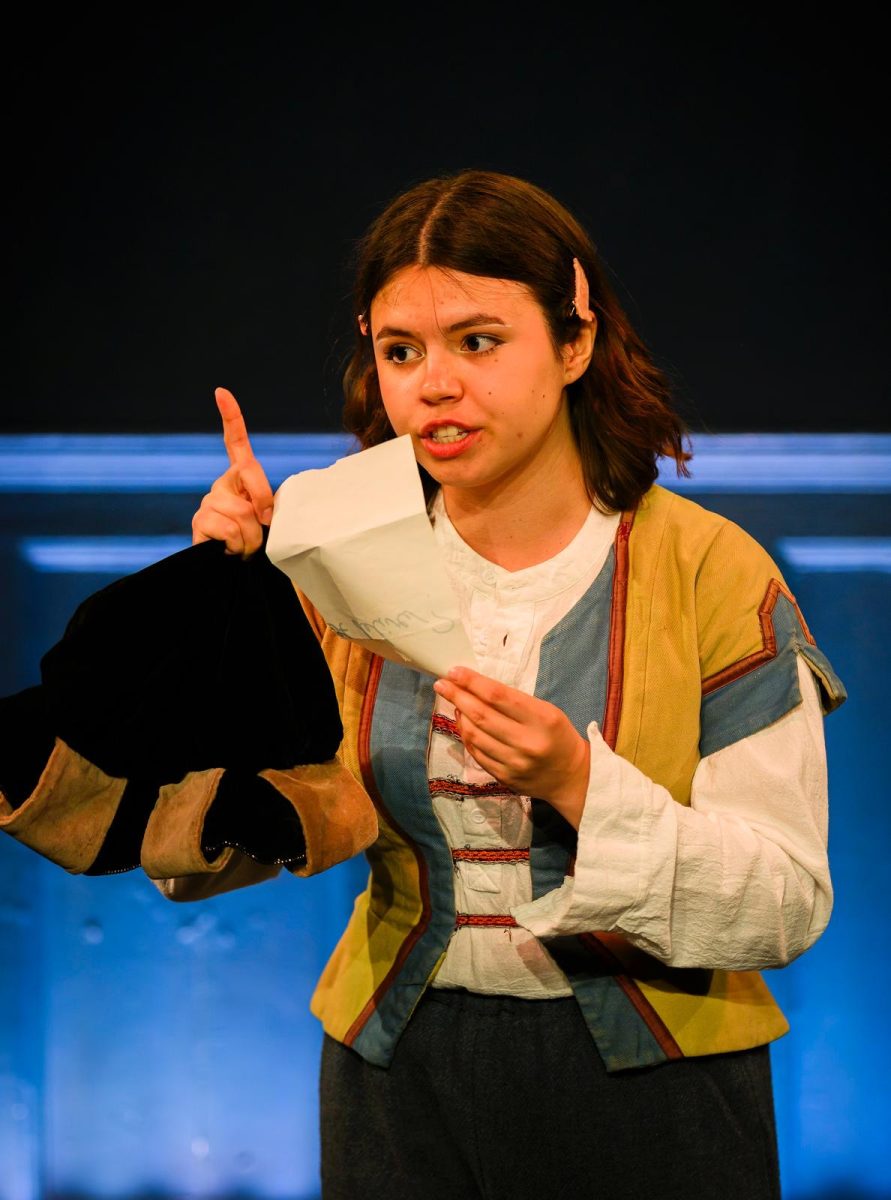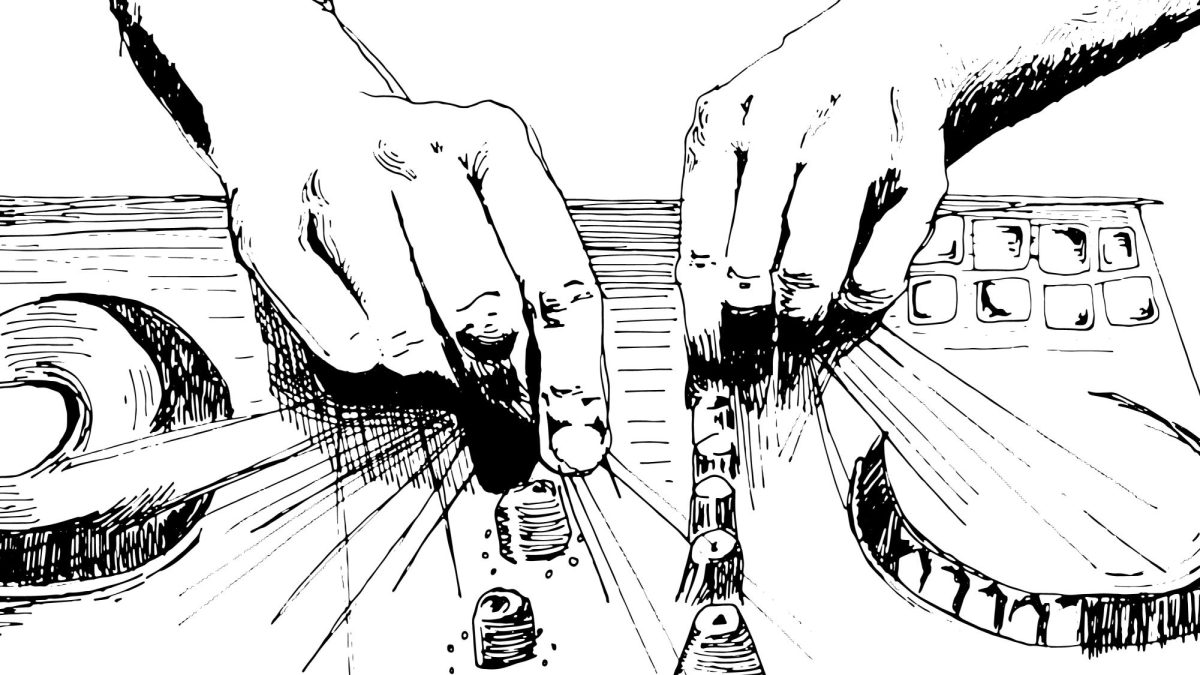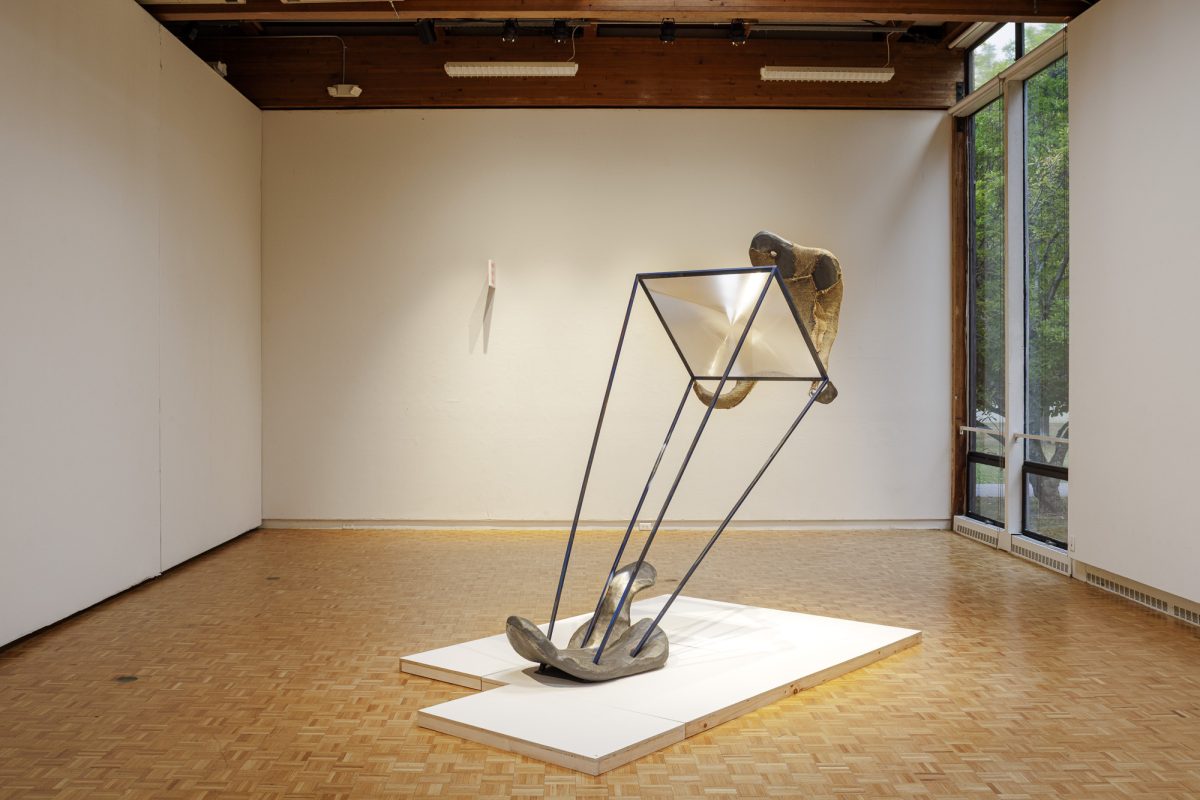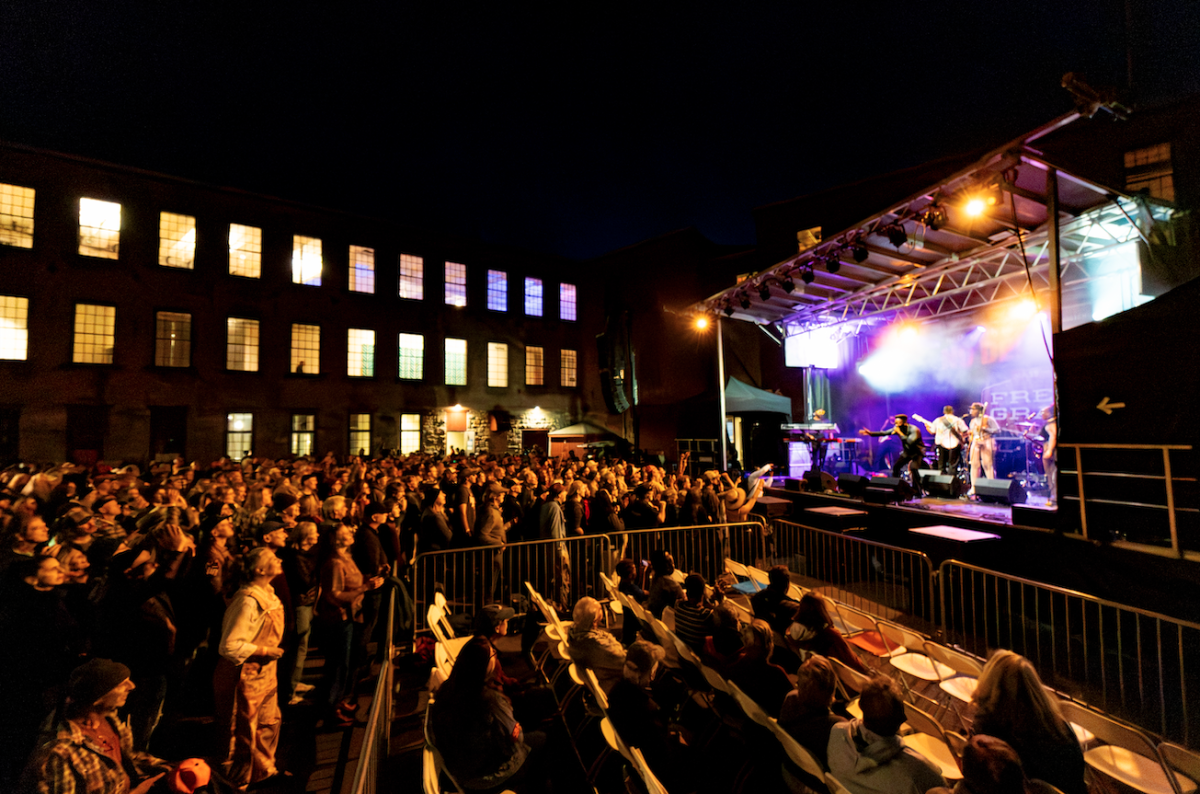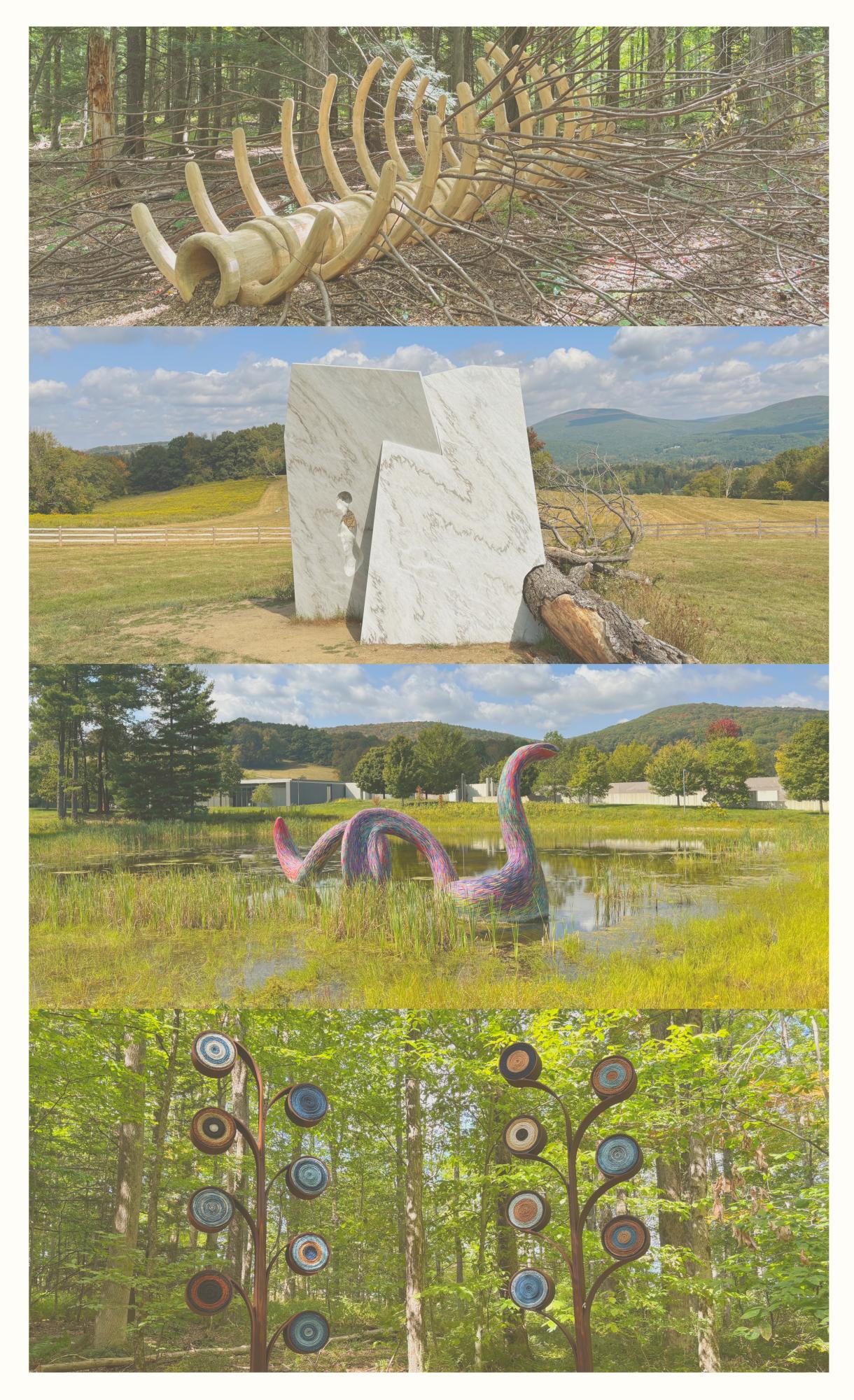
If you hadn’t noticed yet, there are some new additions to the Williamstown landscape: The Clark Art Institute and independent curator Glenn Adamson have reprised the outdoor exhibition Ground/work 2020. The second edition, titled Ground/work 2025, is structured like the first, with six sculptures positioned around the museum’s campus.
The exhibition is notably accessible — it’s open to anyone, 24 hours a day, seven days a week. There is no prohibitive entrance fee, and each sculpture can be accessed via a well- maintained trail. The short circuit is no Mount Greylock, with wide paths and only occasional moderate steepness. Alongside each piece in Ground/work 2025 stands a yellow sign offering a few details about the artist and their practice.
Recent visitors to the Clark are undoubtedly familiar with the most striking of the exhibition’s pieces: Javier Senosiain’s “Coata III,” a giant snake rising from Schow Pond. “Coata III” welcomes visitors to the museum — both those intent on checking out the Ground/work exhibition and those headed to see other works — with animated excitement. The serpent’s body, entirely covered by a mosaic of hand-cut glass tiles, curls in and out of the water, its head looking cheerily toward newcomers emerging from the parking lot.
Next, located along the Nan Path, is Aboubakar Fofana’s “Bana Yiriw ni Shi Folow (Trees and Seeds of Life)”. The titular trees stretch up from the soft forest floor, their steel branches curling around rolls of handwoven and hand-dyed long-staple African cotton. Fofana grows the raw materials for the textile dyes himself on his farm in Mali, the accompanying description explains. The softness of Fofana’s fabrics juxtapose the hardness of the already rain-roughened steel. However, all parts of the banangolos, “trees of life,” will age together during the coming year. In the meantime, small creatures find refuge in the crevices between branch and trunk.
A little further down the path, a swirling mass of thin branches woven by artist Laura Ellen Bacon comes into view. In addition to its intricate exterior, “Gathering My Thoughts” has a complex interior structure, according to its associated yellow sign. Bacon’s piece, which wraps around both a mature tree and small sapling, was woven entirely on-site. Like “Bana Yiriw ni Shi Folow,” “Gathering My Thoughts” will host its fair share of forest critters in the next year as the piece, which will remain at its provenance as it decomposes, returns to forest.
The next stop is Yō Akiyama’s “Oscillation: Vertical Garden,” which erupts at the center of a large clearing. Inspired by the surrounding red oak trees, Akiyama’s piece, made of unglazed stoneware coated in iron powder, explodes out of the earth with organic fervor. “Oscillation: Vertical Garden” manifests the ultimate oneness of the abiotic materials of the earth, including clays and metals, and the flora among which the sculpture grows, illustrating the cyclic nature of production. The piece fights natural order, pulling upwards against gravity, its accompanying description explains.
Turning down a lightly sloping hill, the Stone Bench Trail winds to the fifth piece, titled “the End.” Hugh Hayden’s massive hemlock configuration shudders into memory the inconceivable beasts of yore. Hayden’s intention, however, was to present the wooden bones as a unified symbol of humanity, according to the sign accompanying the piece. The partial skeleton lies supine, vulnerable and open, despite the halo of still-barked branches protecting the ribs. Like “Gathering My Thoughts,” Hayden’s piece will remain on the Clark’s grounds following the closure of the exhibition, slowly returning to the earth.
The route’s finale is Milena Naef’s “Three Times Spanning,” an homage to her family’s long line of Swiss stone carvers. The piece, made of two marble slabs sourced from a quarry in Switzerland, can be found in the gated north corner of the pasture beside a local sugar maple tree. “Three Times Spanning” is a conversation between artist, material, and location, according to its accompanying description. A three-dimensional profile of the artist is carved into a slab, leaving a ghostly impression of the creative hand.
One of the curatorial intentions for the exhibition was to focus on craft, Adamson explained in an email to the Record. The variety of materials and practices showcases the broad methodology of contemporary art. “I wanted diversity of place and medium [in Ground/work 2025], most of all, as we wanted this to be a cross-section of global approaches to craft,” he wrote.
In addition to the individual artists’ practice, Ground/work 2025 explores the integration of nature and art. Experiencing the exhibition requires a walk through the Clark’s lush terrain, transporting the viewer into this carefully arranged garden of creation. Throughout the journey, each piece emerges from the landscape as part of one body. In the coming year, Ground/work 2025 will continue to develop in the Clark’s backyard, as the surrounding plants grow and the seasons change.
“So many people will encounter it while they are out on a morning walk,” Adamson wrote. “Maybe not even expecting to run into an artwork.”
Ground/work 2025 will be on view at the Clark Art Institute until October 2026.




